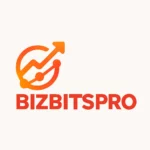Are readers ignoring your affiliate links? Discover the Scannability Gap. Learn the visual hierarchy hacks and formatting fixes required to force users to read the link and demand conversion. Implement this blueprint now.

Post by Peter Hanley coachhanley.com
The Scannability Gap: The Simple Formatting Fix That Instantly Doubles Your Affiliate Click-Through Rate
You have the traffic, and you have the authority (thanks to Blueprint 1), but your affiliate revenue is still lagging. The problem is a brutal truth of the modern web: your content isn’t being read—it’s being scanned.
The difference between a passive visitor and a high-value customer often comes down to pure visual mechanics. Your readers, especially on mobile, are suffering from information overload and are seeking the fastest path to the answer. If they can’t find it in three seconds, they leave, and your affiliate link is never seen.
You are losing conversions not because your advice is weak, but because your presentation is failing to enforce readership.
This article is your tactical guide to mastering Visual Hierarchy and Scannability. We will dismantle the “Wall-of-Text Syndrome” and introduce the proprietary formatting hacks that dictate where the reader’s eye must land, ensuring the final stop is always your high-value transactional link. It’s time to stop writing content for slow readers and engineer your page for immediate conversion.
The Cognitive Debt: Why Scannability is Your Biggest Conversion Barrier
Your reader is not looking for a novel; they are looking for a solution. Every moment they spend deciphering a dense block of text is adding to their Cognitive Debt. When that debt gets too high, they bail out, leaving your site for a competitor with a cleaner, more digestible layout.
You must demand efficiency from your page design.
The F-Pattern: Identifying the “Power Zones”
Web users primarily scan content in an F-Pattern—they read horizontally across the top, scan down the left side, and then read horizontally again lower down, forming the shape of the letter ‘F’. This dictates your strategic use of formatting.
- Top Priority: The first two paragraphs (the headline and the immediate problem statement) must be ultra-scannable.
- Second Priority: The first word of every paragraph, bullet point, and subtitle along the left margin.
Your critical action is to audit your existing content and ensure that the most important, transactional words are placed in these F-Pattern Power Zones. Secure your reader’s attention where it counts most.
The Cost of Wall-of-Text Syndrome (Lower Dwell Time)
Long, unbroken paragraphs are the enemy of conversion. They create immediate psychological resistance—the Wall-of-Text Syndrome—which leads directly to lower Dwell Time (see Blueprint 1) and a higher bounce rate.
When a user sees a huge block of text, they interpret it as effort. Since Google algorithms prioritize user satisfaction, they de-rank content that requires high effort to consume. Your formatting must signal low effort, high reward.
The solution isn’t just about breaking up text; it’s about using formatting to create a series of Micro-Commitments that guide the reader deeper into the page until they are ready to convert. Refuse to let your design fail the user.
Variable 1: Visual Hierarchy (The Formatting Fix)
Visual Hierarchy is the art of using fonts, spacing, and styling to direct the user’s eye flow. You must strategically use these elements to create contrast and signal importance. This is the moment you enforce readership on your terms.
Breaking the Paragraph Barrier: The Micro-Paragraph Rule
Your writing style must be adapted for digital consumption, which means Micro-Paragraphs.
- The Rule: A paragraph must never exceed three sentences. Ideally, keep it to 1–2 sentences for the greatest impact and scannability.
- Why It Works: Short paragraphs create visual white space, which signals ease of reading and allows the eye to quickly process the information and move to the next point.
This simple structural change is a direct line to increasing Dwell Time because the content feels faster to consume. Implement this rule universally across your content library.
Strategic Use of Bold and Italics (The Eye-Catching Command)
Bold text and italics are not for random emphasis; they are transactional tools used to highlight the 20% of text that the user will actually read.
- Bolding: Use bolding to isolate keywords, core concepts, and especially product names or transactional verbs. Bolding must be used sparingly—if everything is bold, nothing is.
- Italics: Use italics for specific definitions, foreign phrases, or quoting an authority source, adding context without disrupting the main scan flow.
The bold text, when read sequentially, must form a logical, compelling summary of the entire section. Demand that the scanner sees your most valuable data points.
The Power of Lists and Blockquotes (Digestible Data Chunks)
Bulleted and numbered lists are the highest-impact visual hacks you possess. They are instantly scannable and perfectly align with the user’s desire for quick takeaways.
- Bullet Points: Use these for features, benefits, and non-sequential takeaways. They break the vertical monotony of text and unlock immediate comprehension.
- Numbered Lists: Use these for step-by-step guides, ranked product lists (e.g., “Top 5 Tools”), or any content that requires sequence. The numbers inherently enforce a cognitive order on the reader.
- Blockquotes/Callouts: Use a stylized blockquote (even simple HTML/CSS div or a dedicated box) to extract and highlight the single most important summary sentence or a key data point. This acts as a visual breakpoint that forces the eye to stop and absorb the command.
Variable 2: The Conversion Flow (The Transactional Fix)
The Scannability Gap is closed only when your formatting seamlessly guides the reader to the conversion point. This is where we stop thinking about writing and start thinking about conversion architecture.
The Contextual Callout (Guiding the Eye)
The traditional “Click Here” link is dead. Modern conversion architecture uses Contextual Callouts—short, high-contrast, formatted sections that appear immediately after a major benefit or problem-solving statement.
- The Structure: A short, impactful, bolded statement followed by a link using descriptive anchor text.
- Example: “If you’re ready to implement this structure today, we recommend starting with this fully optimized content calendar.”
Contextual Callouts bridge the psychological gap between recognizing a problem and committing to a solution. Secure your conversion by making the link impossible to miss.
Link Weighting: Prioritizing the Transactional Anchor
Not all links are created equal. You must use link placement to weight the most transactional links (those leading to an affiliate sale page) over the informational ones (those leading to internal wiki pages).
- Transactional Links: Must be embedded in bolded, descriptive anchor text and placed immediately after a clear benefit statement.
- Informational Links: Can be placed in standard text or in less visually prominent areas.
By prioritizing link visual weight, you demand that the reader’s focus is drawn to the revenue-generating action. Enforce the sales funnel.
The Summary Box and Comparison Table (Forcing the Decision)
For commercial articles, the most effective Scannability Hack is the Summary Box or Comparison Table. These elements are the ultimate conversion accelerators because they summarize the entire article’s value proposition into a single, digestible visual chunk.
- Location: Always place the Summary Box or Table above the fold or immediately after the first H2 section. Users scanning for the product recommendation will look for this structure first.
- Content: Must include the final decision (The Recommended Product) and a high-contrast “Unlock Offer Now” button or link.
This structure allows the highly impatient user to bypass the body of the text and immediately transact. Do not compromise on the inclusion of this final decision-forcing element.
The Blueprint 2 Execution Plan: Your 90-Day Readability Audit
Your plan to close the Scannability Gap requires a systematic audit and rewrite. This is the immediate execution plan to stop wasting traffic and start generating revenue.
Phase 1 (Days 1–30): The Structural Overhaul
Focus on auditing and rewriting your top 10 affiliate-generating pages using the core formatting rules.
- Enforce Micro-Paragraphs: Rewrite every paragraph to be 1–3 sentences max. Implement this rule universally.
- F-Pattern Optimization: Audit the first two paragraphs of every page. Ensure that bolded, transactional language is present in the first word or phrase along the left margin. Dictate the eye flow.
- Deploy Callouts: Introduce 3–5 Contextual Callouts in each article, leading to your primary affiliate link.
Phase 2 (Days 31–60): Conversion Bridge Injection and Testing
Focus on injecting high-contrast visual aids and testing the results.
- List Transformation: Convert any section of three or more sequential sentences into a bulleted or numbered list. Unlock instant comprehension.
- Summary Table Mandate: For every “Best Of” or “Review” article, create a high-contrast Summary Box or Comparison Table and place it prominently near the top. Force the decision.
- A/B Test Bolding: Begin A/B testing two versions of your content: one with moderate bolding and one with aggressive bolding to see which one drives a higher CTR.
Phase 3 (Days 61–90): Automation and Scalability
Establish the systems to ensure all future content adheres to the Scannability standard.
- Guardrail Integration: Update your Brand Voice Guardrails to include the Micro-Paragraph Rule and Contextual Callout requirements.
- Data Feedback Loop: Begin tracking conversion rates (CR) specific to the placement of your Summary Boxes. Secure your highest-performing layout.
- Scale: With your pages now structurally optimized for rapid consumption and conversion, you are ready to produce new content that inherently demands a click and secures immediate revenue.
The Scannability Gap is an architectural failure, not a content failure. By aggressively prioritizing Visual Hierarchy and deploying Transactional Formatting—Micro-Paragraphs, strategic bolding, and high-impact Summary Boxes—you solve the Cognitive Debt problem. You are now equipped to dictate where your reader’s eye lands and demand that their final action is a click on your revenue-generating link.
Implement this structural audit today. Your optimized conversions await.
Post using the Template , visuals , logos by Wealthy Affiliate and research and writing support by Perplexity
